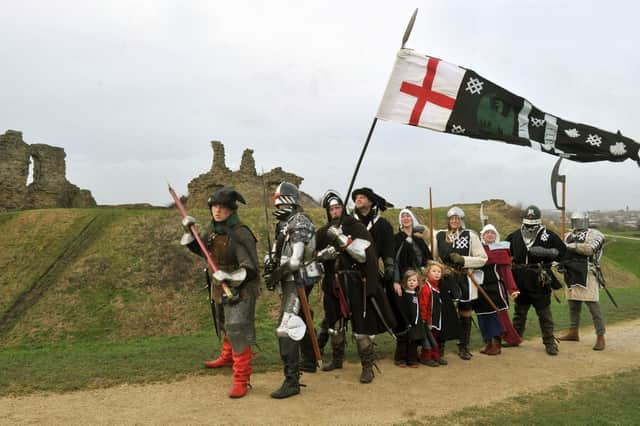History of the Battle of Wakefield and timings for the Memorial March on January 3


Richard, Duke of York, the disputed King of England and his 5,000 men were ready to fight for his right to the throne from his home at Sandal Castle.
And just a few miles away an army had been assembled at Pontefract Castle.
Advertisement
Hide AdAdvertisement
Hide AdThe Lancastrian forces, under the command of Margaret of Anjou, the wife of King Henry VI, numbered an estimated 15,000.
Both armies clashed on December 30, 1460 on land that is now Manygates Park.
It is estimated that as many as 3,000 men were killed in the battle, with Richard’s forces, the Yorkists, accounting for most of the casualties.
The battle of Wakefield was the fifth one of the Wars of the Roses fought between the Houses of Lancaster and York between 1455 and 1485.
Advertisement
Hide AdAdvertisement
Hide AdHistorian Helen Cox, who has written an authoritative book, The Battle of Wakefield Revisited, said: “The Lancastrians were led by King Henry VI, who had held the throne since 1429, and the Yorkists were led by Richard, Duke of York, who made a bid for the crown.
“The Lancastrians used Pontefract Castle as a stronghold throughout the wars and Richard, Duke of York owned Sandal Castle.”
The first battle took place at St Albans in 1455 and was a Yorkist victory. Four years of uneasy truce followed.
Helen added: “Tensions between the two houses intensified after 1459 and the Yorkists were victorious again in the 1460 Battle of Northampton when King Henry VI was captured and imprisoned.”
Advertisement
Hide AdAdvertisement
Hide AdRichard then went to London to enter parliament and try to claim the throne. But his bid was rejected.
Instead, the Act of Accord was passed, meaning Richard would be heir to the throne after Henry’s death.
Queen Margaret - Henry’s wife - was outraged and began increasing the size of the Lancastrian army to free the King. The supporters gathered at Pontefract Castle.
Helen takes up the story: “In early December 1460, Richard, Duke of York, left London to make his way to his castle at Sandal with his son Edmund,Earl of Rutland, arriving around December 21.
Advertisement
Hide AdAdvertisement
Hide Ad“On December 30, Richard left the castle marching down the present-day Manygates Lane to face the enemy deployed in the Portobello area.
“Once committed on the field he was betrayed by a supposed ally, surrounded and outnumbered.”
When it became obvious the battle was lost Edmund, Earl of Rutland and his troops made a break for the north and tried to escape through Wakefield.
They were pursued by John, Lord Clifford of Craven and it is believed they were assassinated outside the Chantry Chapel.
Advertisement
Hide AdAdvertisement
Hide AdRichard tried to fight his way back the safety of Sandal Castle but was killed on the field.
This spot has been identified as being the triangle of land where Milnthorpe Lane and Manygates Lane meet - now the site of Manygates School.
Helen said: “The heads of Richard, his son Edmund and other nobles were taken to Pontefract Castle and then to York where they were displayed on spikes above the city gates.”
On January 3, 2022 (Omicron variant and restrictions permitting) the Friends of Sandal Castle along with the #Frei Compagnie and the #Harrington Household groups of re-enactors are planning a Battle of Wakefield Memorial March.
Advertisement
Hide AdAdvertisement
Hide AdIt will be led by the Rt Rev Tony Robinson, the Bishop of Wakefield from Wakefield Cathedral to Sandal Castle, via the Chantry Chapel and the Duke of York Monument.
They will lay wreathes en route, then a short service will be held at the castle to honour those who fell in the Battle of Wakefield on December, 30 1460, and all the victims of conflicts ever since.
Timing of events for memorial march
11.45 Re-enactment groups must at Wakefield Cathedral
11.55 Depart Wakefield Cathedral
12.15 Arrive at Chantry Chapel sand lay a posy of white roses at the memorial plaque of Edmund, Earl of Rutland
13.10 Arrive at the Duke of York memorial and lay a wreath of white roses
13.30 Arrive at Sandal Castle
13.50 Lay a wreath of red and white roses, Bishop of Wakefield's service
14.20 Reenactors will be on hand to talk and answer questions from the public
15.00 Re-enactors disperse